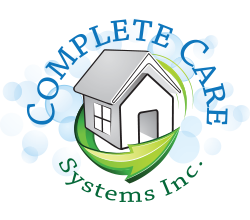The Hidden Danger Lurking in Your Laundry Room: Why Ignoring Dryer Vent Cleaning Can Be a Fire Hazard
Laundry day is a chore that many of us approach with a sense of routine. We toss our clothes into the dryer, hit the start button, and go about our day without giving it much thought. However, what if I told you that this seemingly innocuous task could pose a serious fire hazard if not properly maintained? Ignoring dryer vent cleaning is a common oversight that can have devastating consequences. In this blog post, we’ll explore the importance of regular dryer vent cleaning and provide ten essential tips to help you mitigate the risk of a dryer-related fire in your home.
Understanding the Risk: The accumulation of lint, dust, and debris in your dryer vent can restrict airflow, causing the appliance to overheat and potentially ignite. According to the National Fire Protection Association (NFPA), failure to clean dryer vents is a leading cause of residential fires, resulting in hundreds of injuries and millions of dollars in property damage each year.
Recognizing the Signs: Before disaster strikes, it’s essential to be vigilant for warning signs that indicate a clogged dryer vent. These may include longer drying times, excessive heat emanating from the dryer, a musty odor in the laundry room, or lint buildup around the dryer vent opening.
Schedule Regular Cleanings: Ideally, dryer vents should be cleaned at least once a year to prevent the accumulation of lint and debris. However, if you notice any of the aforementioned warning signs, it’s crucial to address the issue promptly by scheduling a professional cleaning.
DIY Maintenance: In addition to professional cleanings, homeowners can perform routine maintenance tasks to keep their dryer vents clear. This includes regularly cleaning the lint trap, inspecting the vent hose for obstructions, and ensuring that the outdoor vent opening is free of debris.
Invest in Proper Installation: Proper installation of your dryer vent system is essential to minimize the risk of fire. Ensure that the vent hose is made of rigid metal or UL-listed flexible metal, and avoid using plastic or foil ducts, which are more prone to trapping lint and restricting airflow.
Keep the Area Clear: Avoid placing flammable materials such as clothing, cardboard boxes, or cleaning supplies near the dryer, as they can ignite if exposed to heat. Additionally, ensure that the area surrounding the dryer vent opening is free of obstructions, such as bushes or debris, to facilitate proper airflow.
Use the Right Detergent: Certain laundry detergents contain oils or waxes that can contribute to lint buildup in your dryer vent. Opt for detergent formulations that are specifically labeled as “low-sudsing” or “high-efficiency” to minimize this risk.
Install a Dryer Vent Cover: Installing a vent cover or bird guard over the outdoor vent opening can help prevent birds, rodents, or other pests from nesting inside the vent and causing blockages. However, ensure that the cover is designed to allow for adequate airflow and does not impede ventilation.
Monitor Dryer Performance: Pay attention to how your dryer is performing and be proactive in addressing any issues that arise. If you notice unusual noises, excessive vibration, or erratic behavior, it could indicate a problem with the dryer vent that requires immediate attention.
Educate Your Household: Make sure that everyone in your household is aware of the importance of dryer vent maintenance and knows how to recognize the signs of a potential fire hazard. Encourage family members to follow best practices when using the dryer and to report any concerns promptly.
Ignoring dryer vent cleaning is a risk that no homeowner can afford to take lightly. By prioritizing regular maintenance, investing in proper installation, and remaining vigilant for warning signs, you can minimize the risk of a dryer-related fire and keep your home and loved ones safe. Don’t wait until it’s too late – take action today to protect your property and peace of mind. Book your dryer vent cleaning online at https://completecaresystems.com/online-booking/ or by calling (727) 364-5158
